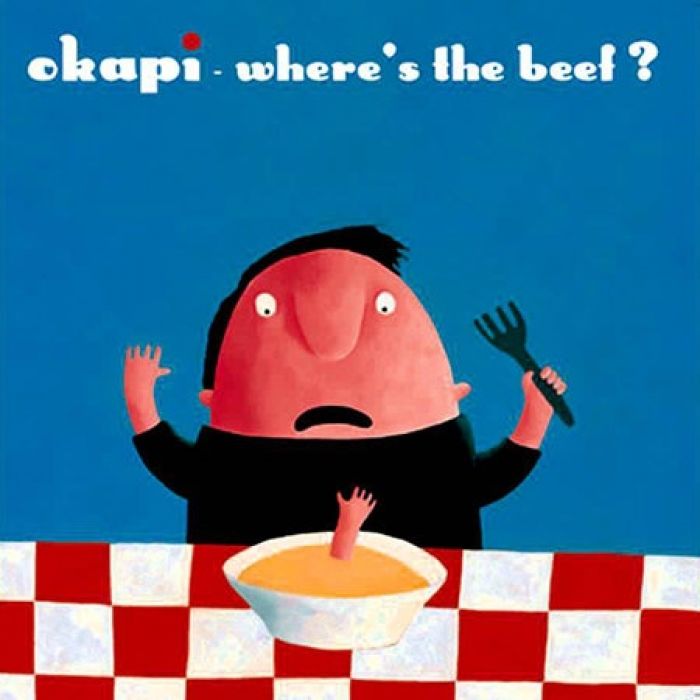Where’s the Beef? by Økapi (Review)

I’ll confess… I was tempted to write off Where’s the Beef? almost within the first 30 seconds, partly because of the silly title (which conjured up all sorts of bad notions) and partly because of the cheesy Casio trumpet fanfare that begins the disc on a rather whimsical note. However, in Økapi’s case, that sense of whimsy is by no means a liability, but rather the disc’s saving grace.
Although the band’s sole member, one Filippo Paolini, is listed as handling samplers, turntables, tapes, and CDs, this is no wannabe bedroom hip-hopper. Rather, the often amusing collages and soundscapes are more inline with the dazzling constructions of, say, The Avalanches. Although the compositions on Where’s the Beef? are nowhere near as intricate and convoluted as those on Since I Left You, Paolini shares the same interest in taking the most disparate of sounds — be it the “bah” of sheeps, sweeping string arrangements, slivers of glitch, meandering horns, Spike Jones-like breaks, chopped up newscasts — and apparently juxtaposing them in the most un-obvious manners possible.
The results are sometimes a bit off the mark — I’d estimate that nearly a third of the disc is more filler than anything else — but then it works, the songs on Where’s the Beef? can yield some startling results. For example, the evocative passage of “Chetamomil(la),” whose plucked strings, piping flutes, and lazily-strummed guitars conjure up scenes of chilling on a tropical beach, relaxing with a cool drink in hand whilst basking in the golden setting sun. “Stek-House” is full of percolating gurgles, glitches, and stuttering beats. At times, it seems reminiscent of Pizzicato Five’s driving Shibuya pop pastiche, only in a much more muted form.
“Prufolli” is reminiscent of Plone’s whimsical, playful analog melodies, with shimmering synth sounds playing off more humorous, random noises that, for lack of a better description, sound like clown horns. However, “La Fuga Di Sandokan” takes on a much darker, more serious tone — exotic textures and tabla-like percussion combine with orchestral stabs and spiralling strings to create a piece that might function quite well as a score for an espionage thriller. And some garbled voices, which sound like intercepted transmissions, only add to the effect.
Adding to the disc’s overall mercurial nature is the fact that this piece is then further reinterpreted and re-imagined. The insistent rhythms and textures are there, but new sounds are slowly worked into the mix — elegiac guitar drones, some subtle breakbeats, slightly more skewed strings.
It’s this sort of playfulness, this willingness to experiment and tinker with even his own compositions, that ultimately proves to be Økapi’s true appeal. Sure, there are times where you have to wade through some fluff and dross to get to the good stuff, but the good stuff is there, if you’re willing to be patient.
That being said, part of me wishes that Økapi would settle down and get a bit more focused. He hints at so many fascinating sounds, tinkering with them for only a few seconds, perhaps a minute or two at the most, before jumping onto the next one like some hyperactive kid — and I wish he’d more fully explore some of them. But at the same time, I realize that Økapi becoming more focused could easily rob his music of the very spontaneity that makes it so intriguing (and frustrating) in the first place.